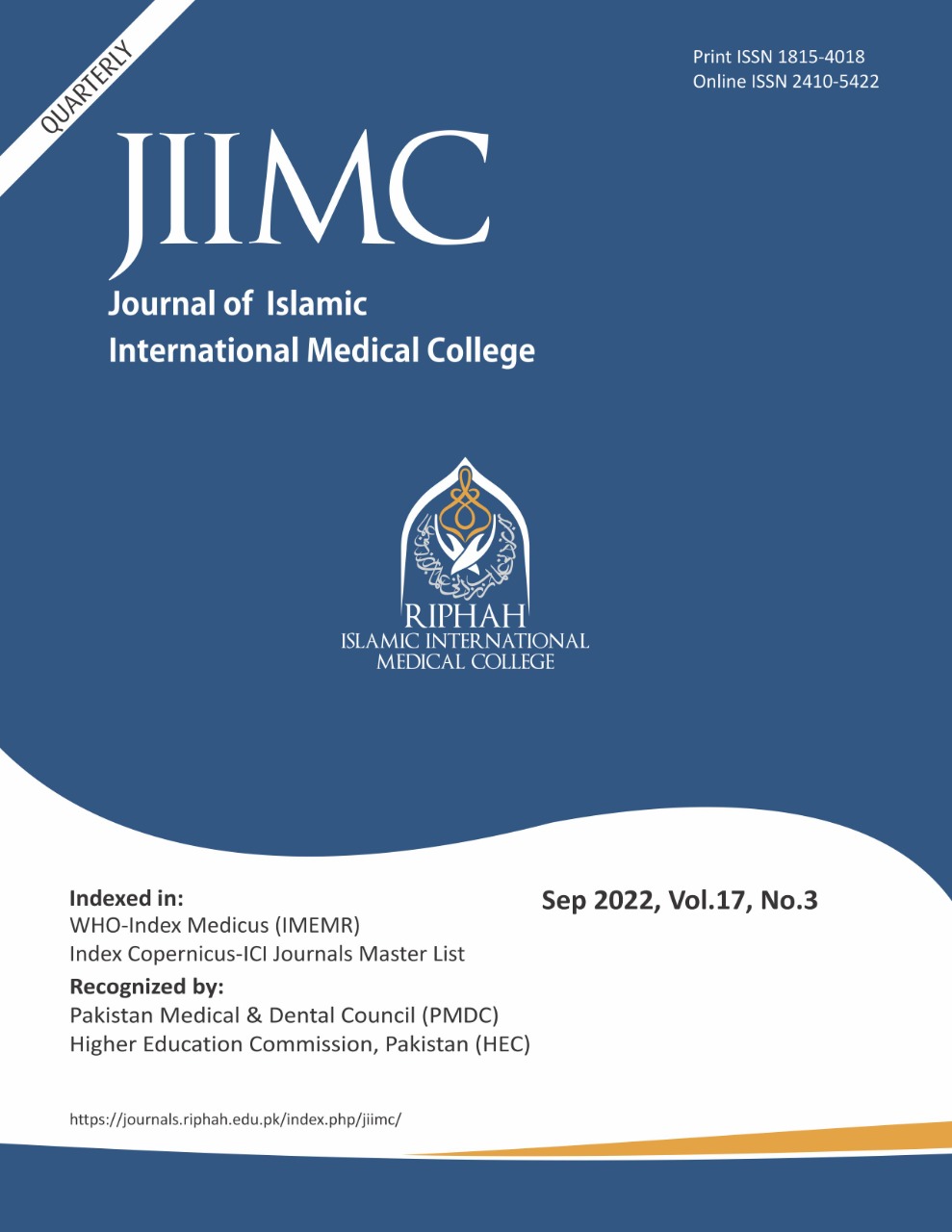Frequency of Temporomandibular Joint Disorders (TMDS) Among University Students from Islamabad, Pakistan
Frequency of Temporomandibular Joint Disorders
Abstract
Objective: To determine the frequency of temporomandibular disorders (TMDs) among 18- to 24-year-old university students of Islamabad.
Study Design: Descriptive cross-sectional study.
Place and Duration of Study: Sample was chosen from Quaid e Azam University, Bahria University and Riphah International University. Duration of the study was from January to March 2020.
Materials and Methods: The study comprised of 160 candidates from various universities in Islamabad including both males and females aged 18 to 24 years. Data was collected using a self-reported questionnaire and clinical examination. Age, gender, socio-economic status, and history of symptoms of TMDs were assessed. Clinical examination of the Temporomandibular Joint was carried out by the investigator to assess any clicking sounds, tenderness in the myofascial muscles and any evidence of osteoarthritis. The data was analyzed by using IBM SPSS 23. The results and frequencies were calculated using the Chi-Squared test. With a p value of <0.05, a significant relationship of TMD with gender and its clinical conditions, was determined.
Results: Out of the 160 examined, 88 were males and 72 were females. TMDs were more prevalent amongst candidates aged 22 years, with a percentage of 31.3%. Prevalence of TMDs among the participants was calculated at 61.3%. Out of those 61.3%, 58.1% had internal derangements 15% had myofascial pain and 2.5% had osteoarthritis.
Conclusion: Our study shows a high prevalence of TMDs in 18- to 24-year-old individuals. There was an overall prevalence of 61.3% among the total participants. It was found to be most prevalent among 22-year-old individuals with a percentage of 31.3%.


